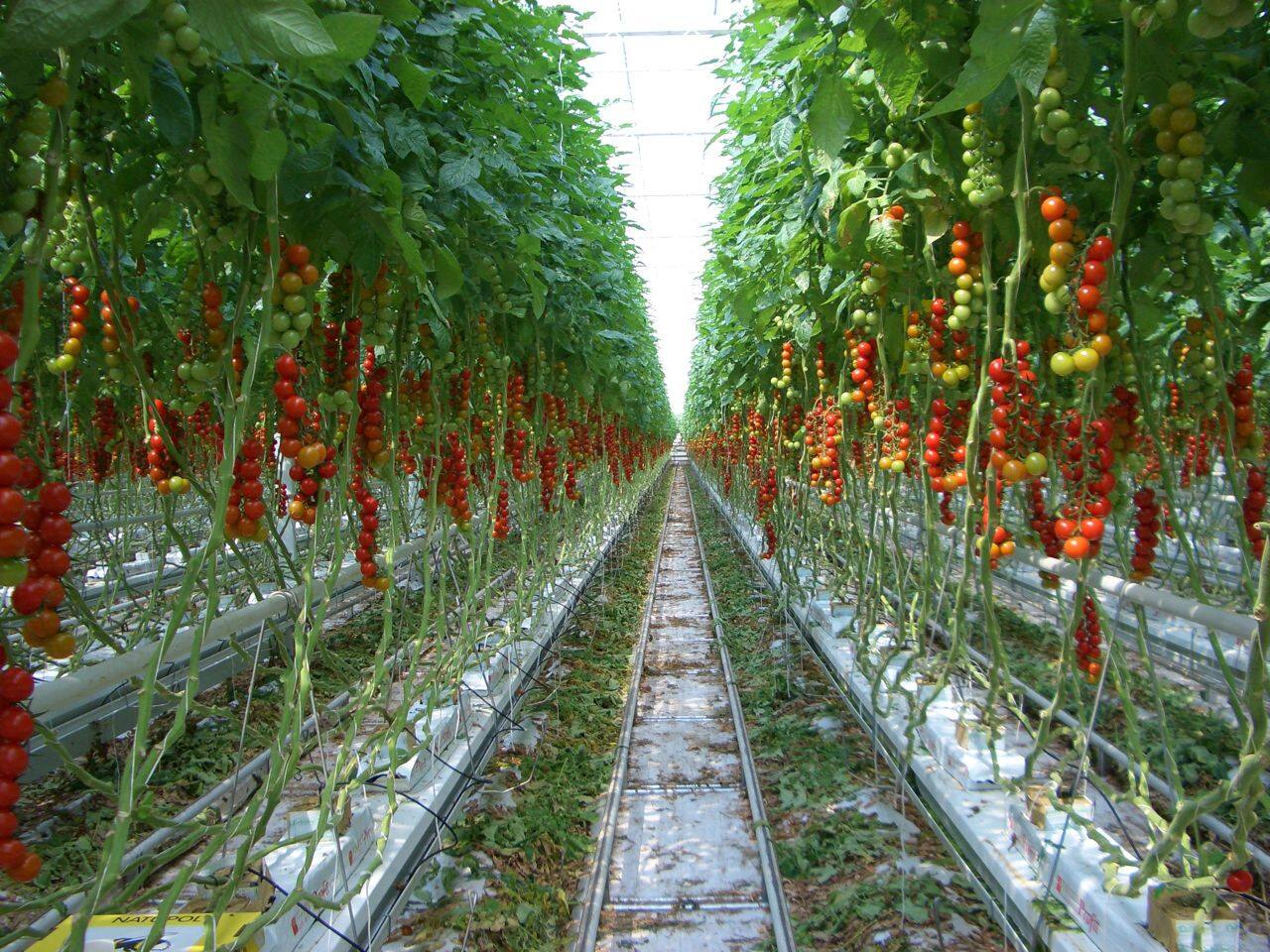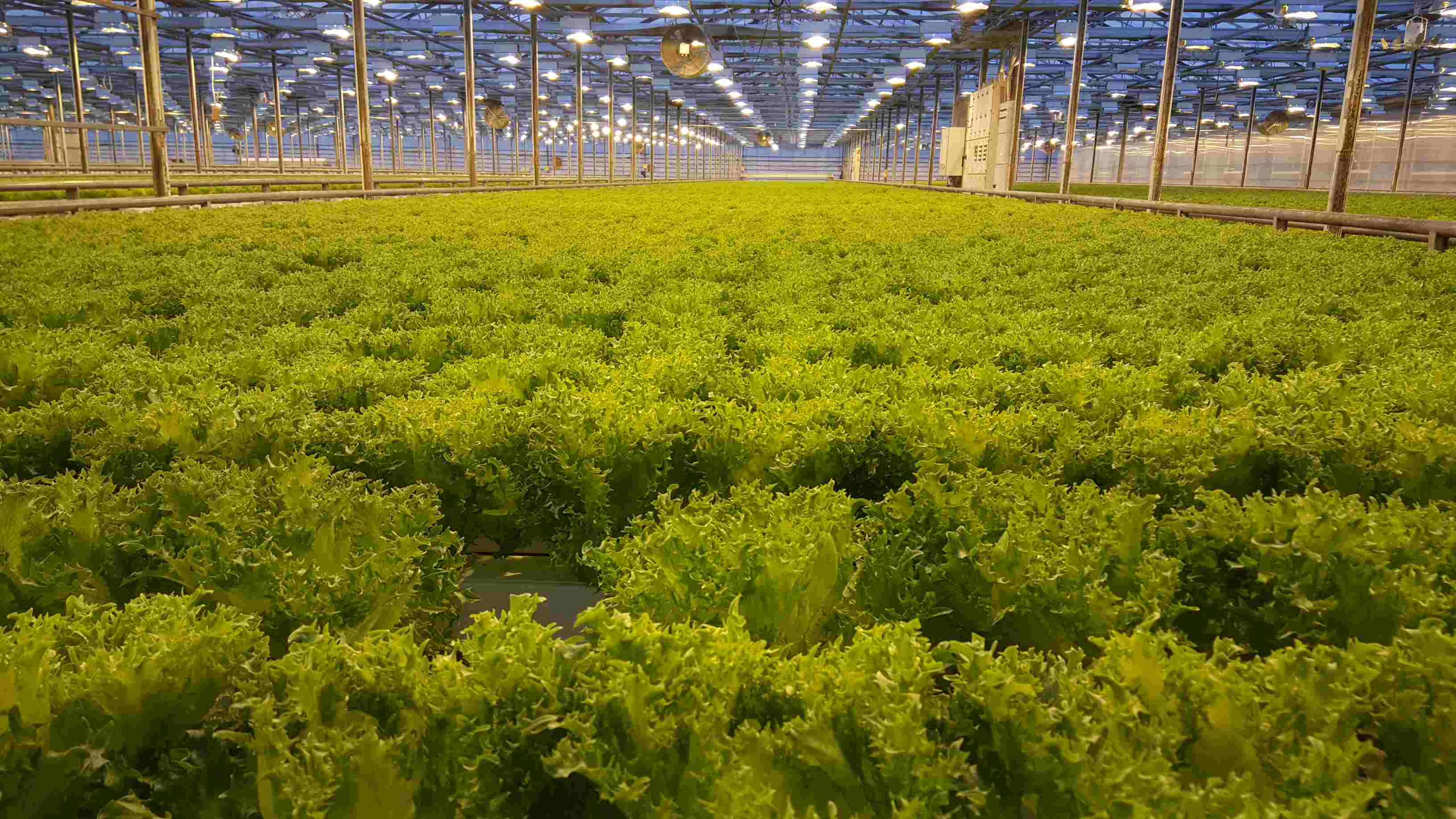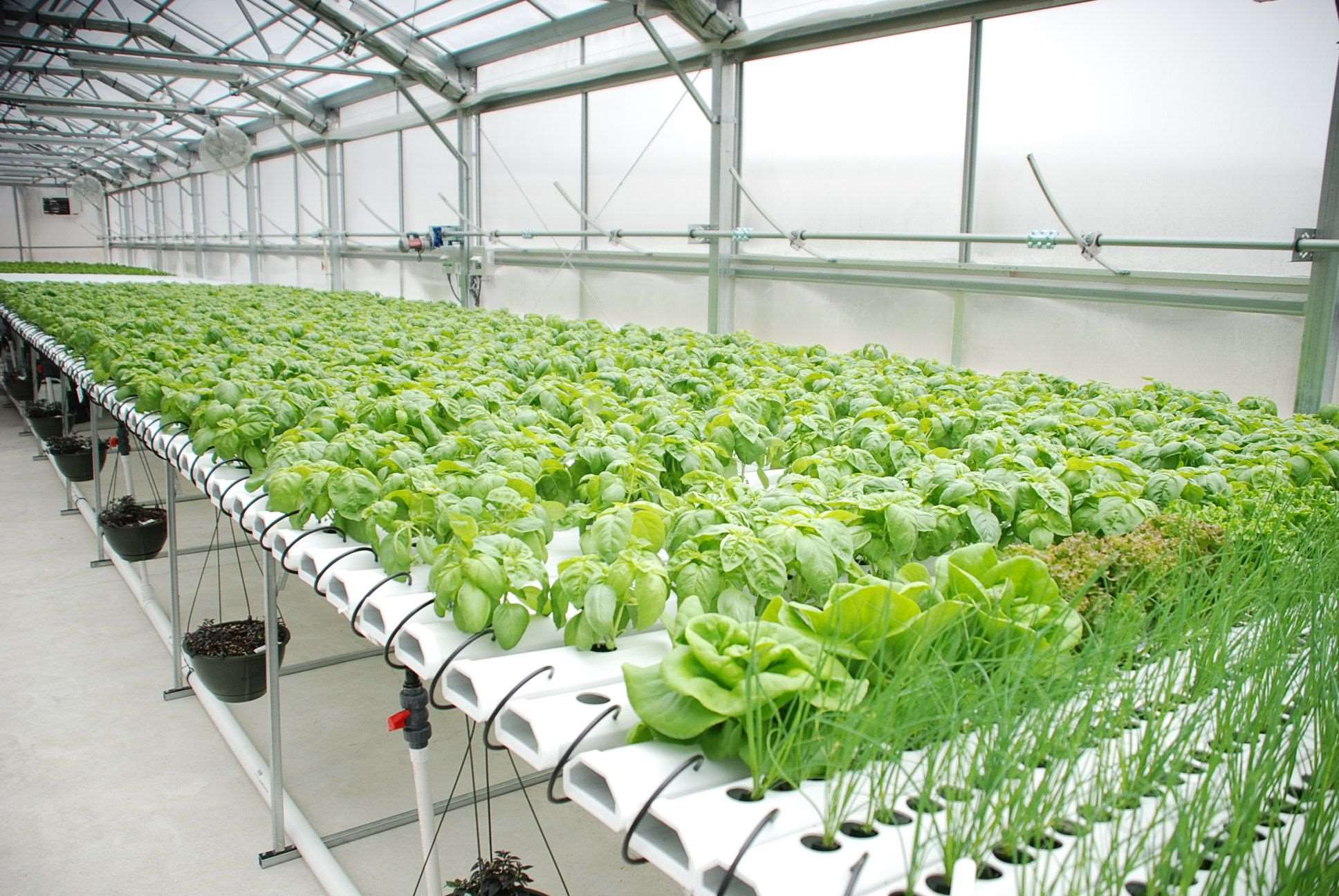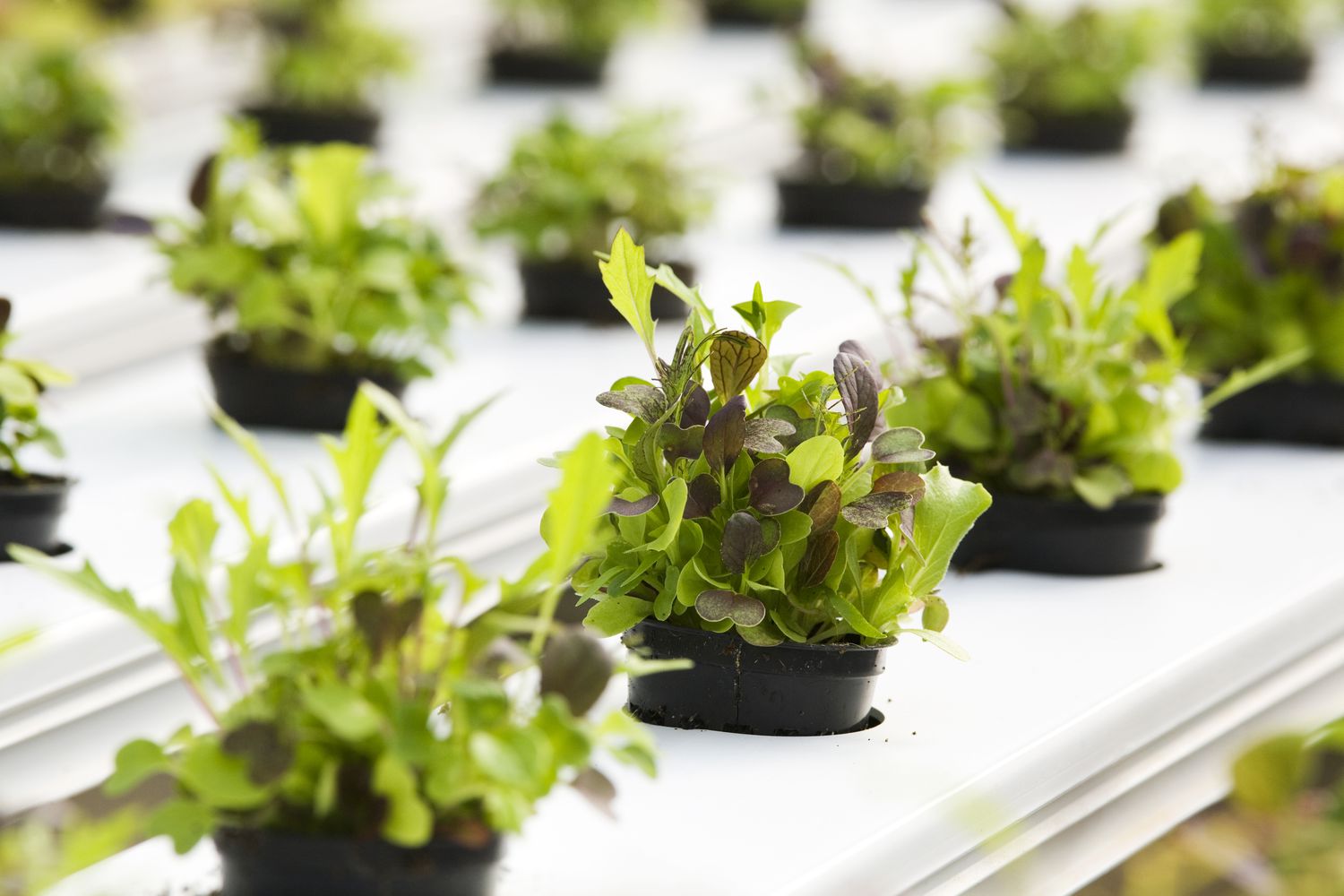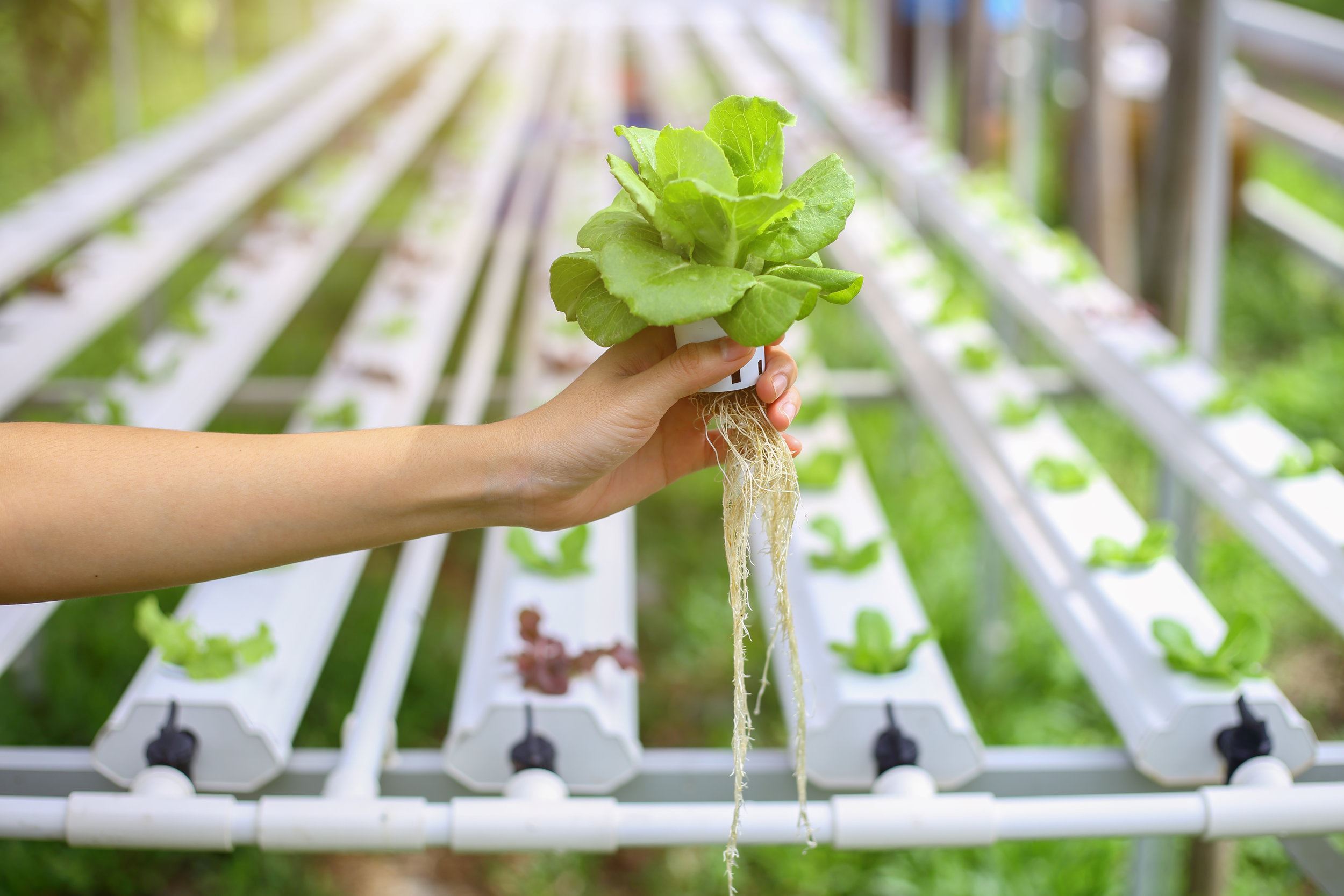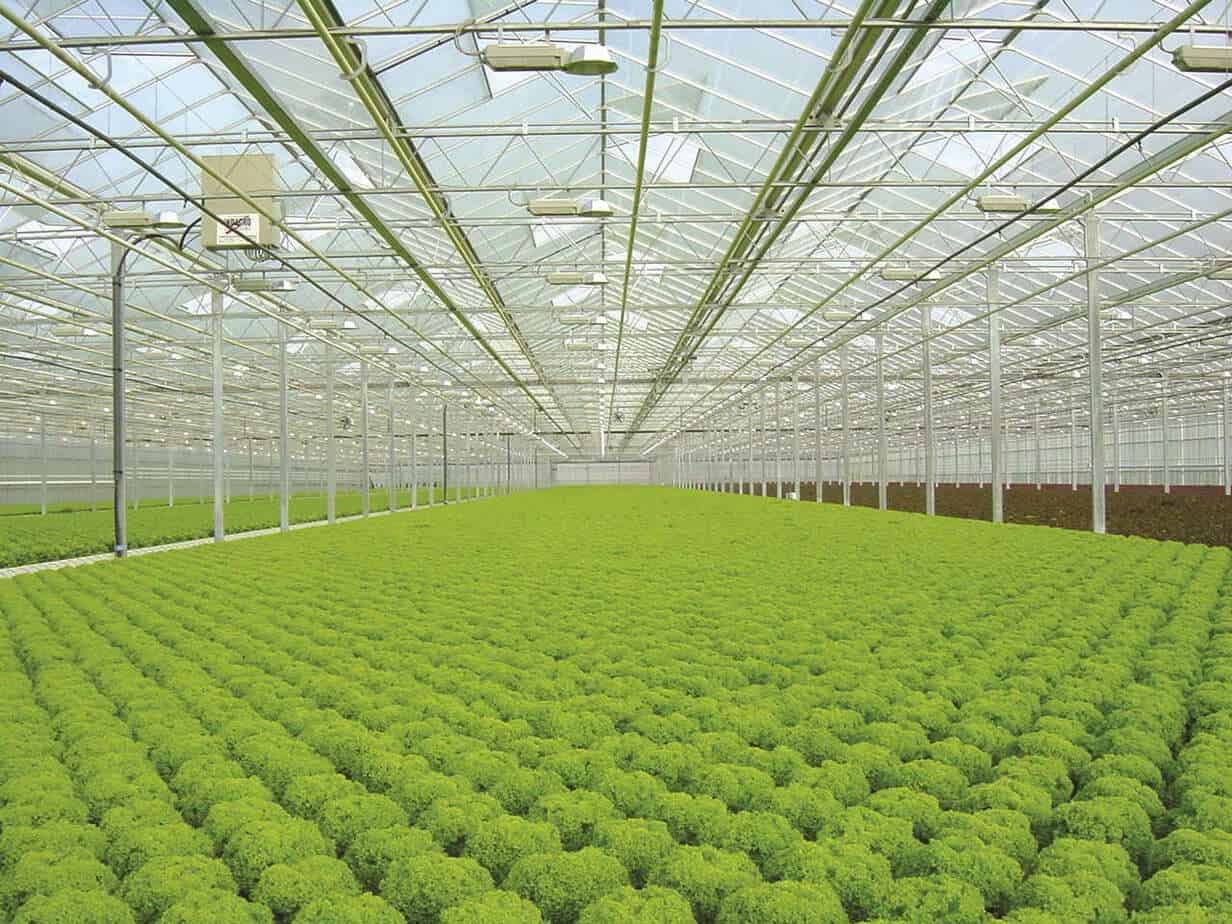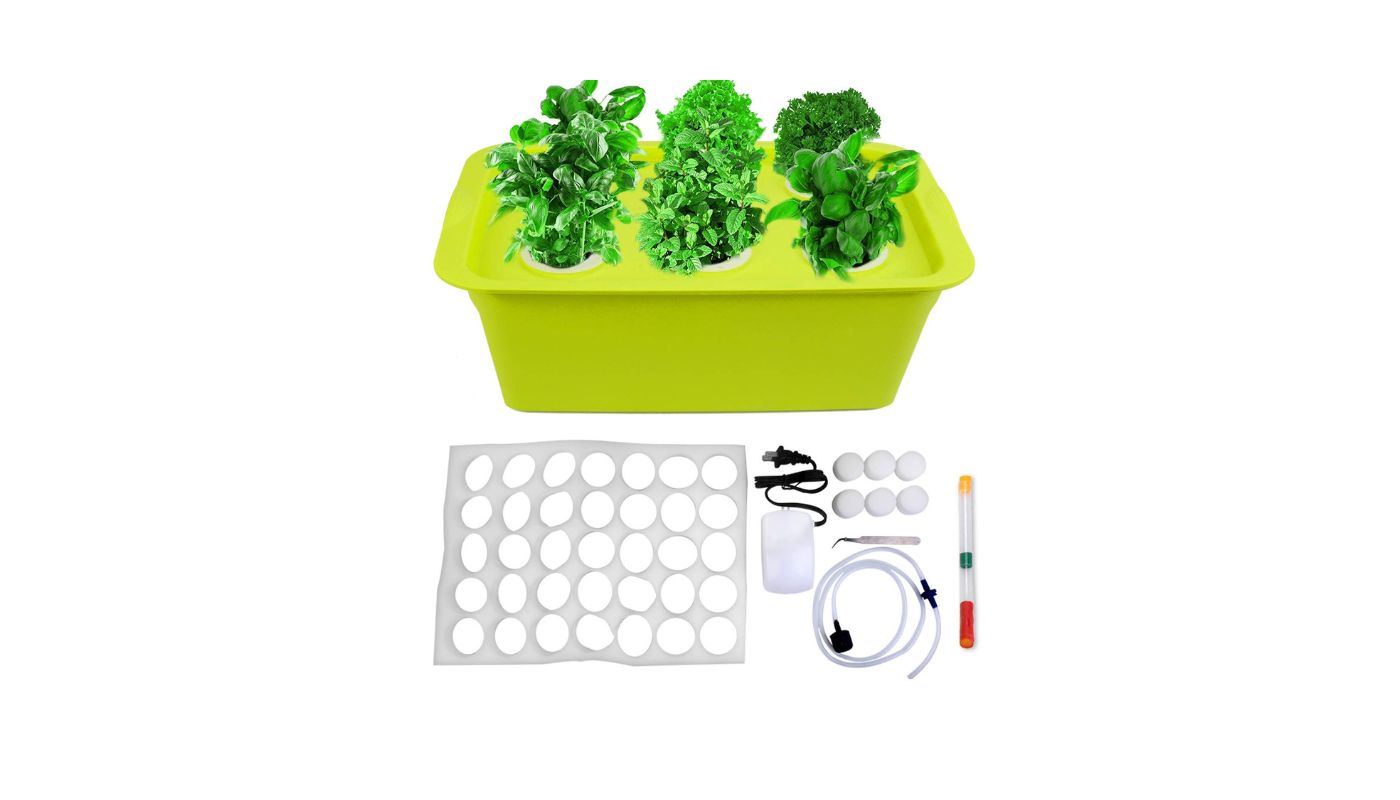Home>Gardening Tips and Tricks>Maximizing Yield>How To Grow Spinach In Hydroponics
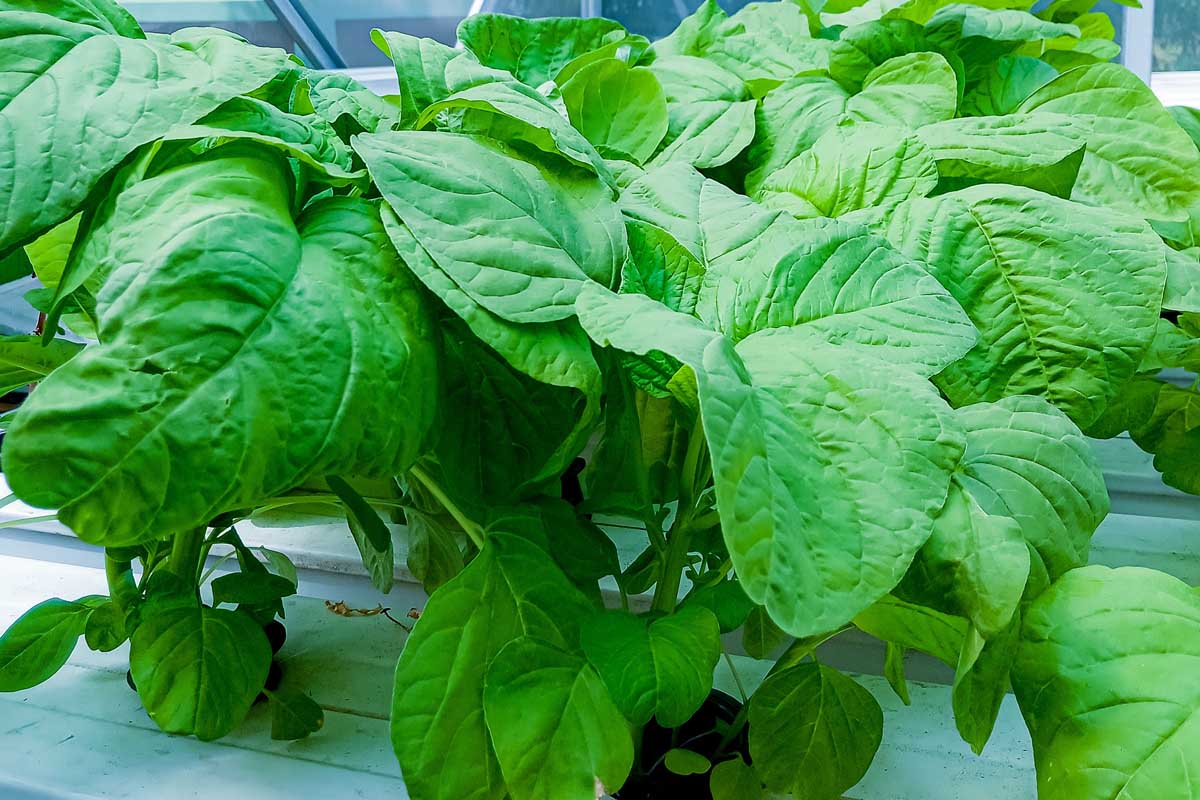

Maximizing Yield
How To Grow Spinach In Hydroponics
Modified: January 22, 2024
Learn how to maximize your spinach yield in hydroponics with our expert tips and techniques. Grow healthy and abundant spinach plants with our step-by-step guide.
(Many of the links in this article redirect to a specific reviewed product. Your purchase of these products through affiliate links helps to generate commission for Chicagolandgardening.com, at no extra cost. Learn more)
Table of Contents
- Introduction
- Benefits of Growing Spinach in Hydroponics
- Choosing the Right Hydroponic System
- Recommended Varieties of Spinach for Hydroponics
- Setting Up a Hydroponic System for Spinach
- Nutrient Requirements for Growing Spinach Hydroponically
- Lighting and Temperature Needs for Spinach in Hydroponics
- Maintaining the Hydroponic System
- Common Pests and Diseases in Spinach Hydroponics
- Harvesting and Storing Spinach Grown Hydroponically
- Conclusion
Introduction
Welcome to the world of hydroponics, where you can unlock the potential of growing vegetables like spinach without soil. Hydroponics is an innovative gardening method that allows you to cultivate plants in a nutrient-rich water solution, providing them with optimal conditions for growth.
Spinach, with its vibrant green leaves and numerous health benefits, is a popular choice for hydroponic gardening. Whether you are a seasoned gardener or a beginner, hydroponics offers you the opportunity to maximize your yield and enjoy a steady supply of fresh, pesticide-free spinach all year round.
Hydroponic cultivation offers several advantages over traditional soil-based gardening. Firstly, you have complete control over the growing environment, including nutrient levels, pH balance, and lighting conditions. This allows you to tailor the conditions specifically to the needs of spinach plants, ensuring their optimal growth and productivity. Secondly, hydroponic systems eliminate the risk of soil-borne diseases and pests, providing a clean and healthy environment for your spinach plants.
In this article, we will explore the benefits of growing spinach in hydroponics systems and provide you with a step-by-step guide on how to set up a hydroponic system for spinach. We will also cover important considerations such as choosing the right hydroponic system, selecting the best spinach varieties, providing the correct nutrient balance, and maintaining ideal lighting and temperature conditions for your hydroponic spinach garden. So, let’s dive in and discover how you can grow delicious and nutritious spinach in your very own hydroponic setup.
Benefits of Growing Spinach in Hydroponics
Growing spinach in a hydroponic system offers numerous benefits that make it an attractive option for both commercial growers and home gardeners. Let’s explore some of the key advantages of hydroponic spinach cultivation.
- Year-round Availability: One of the biggest advantages of hydroponics is that it allows you to grow spinach all year round, regardless of the external weather conditions. Traditional soil-based gardening is restricted to specific seasons, but hydroponics provides a controlled environment where you can create the optimal conditions for spinach growth throughout the year.
- Higher Yields: In a hydroponic system, spinach plants can reach their maximum growth potential due to the precisely balanced nutrient solution that is constantly available to their roots. This nutrient-rich environment fosters faster and healthier growth, resulting in higher yields compared to traditional soil gardening.
- Space Efficiency: Hydroponics is ideal for those with limited space for gardening. Since hydroponic systems do not require soil, you can set up your spinach garden in small spaces, such as balconies, rooftops, or even indoors. This makes it an excellent option for urban dwellers or anyone looking to maximize their gardening efforts in limited space.
- Water Conservation: Hydroponic systems are designed to be highly water-efficient. Unlike traditional gardening, where water is absorbed and lost through the soil, hydroponics recirculates and reuses water. This drastically reduces water consumption, making it an environmentally friendly choice for spinach cultivation.
- Pest and Disease Control: In a hydroponic system, the absence of soil eliminates the risk of soil-borne pests and diseases that can harm your spinach plants. Without the need for chemical pesticides, you can grow clean, healthy spinach that is free from harmful contaminants.
- Fast Growth and Nutrient Density: Hydroponically grown spinach tends to grow faster compared to its soil-grown counterparts. The controlled environment ensures that the plants receive the precise amount of nutrients they need, resulting in rapid growth and higher nutrient density. This means that the spinach you harvest from your hydroponic garden will be packed with vitamins, minerals, and antioxidants.
As you can see, growing spinach in a hydroponic system offers numerous advantages that make it a compelling choice for both commercial growers and home gardeners. From year-round availability and higher yields to space efficiency and pest control, hydroponics provides an efficient and sustainable way to cultivate fresh and nutritious spinach. So, let’s explore the different hydroponic system options and choose the one that suits your needs and space constraints.
Choosing the Right Hydroponic System
When it comes to growing spinach in hydroponics, choosing the right system is crucial for the success of your garden. There are several different types of hydroponic systems available, each with its own advantages and considerations. Let’s explore some of the most commonly used hydroponic systems for spinach cultivation.
- Drip System: This is one of the most popular hydroponic systems for growing spinach. In a drip system, a nutrient-rich solution is pumped from a reservoir and delivered to the plants through drip emitters. This allows for precise control over nutrient delivery and ensures optimal distribution to the roots of each plant. Drip systems are relatively easy to set up and are suitable for both small and large-scale spinach production.
- NFT (Nutrient Film Technique) System: NFT systems involve a thin film of nutrient solution flowing continuously over the roots of the plants. The roots are exposed to the solution, absorbing the required nutrients. NFT systems are highly water-efficient and offer good oxygenation to the roots. They are ideal for smaller-scale spinach production and are particularly popular among home gardeners.
- Deep Water Culture (DWC) System: In a DWC system, spinach plants are suspended in a nutrient solution with their roots submerged directly in the water. Air stones or diffusers provide oxygen to the roots. DWC systems are relatively easy to set up, cost-effective, and allow for fast growth. They are suitable for both individual plant containers and larger systems.
- Aeroponics: Aeroponic systems use misters or foggers to create a fine mist of nutrient solution that is sprayed directly onto the roots of the plants. This method provides excellent oxygenation and nutrient absorption. While aeroponics allows for rapid growth and high yields, it requires more technical knowledge and precise monitoring compared to other hydroponic systems.
- Vertical Farming Systems: Vertical farming systems make efficient use of space by stacking multiple levels of plant containers vertically. These systems are especially useful for those with limited space or for commercial growers looking to maximize their spinach production. Vertical hydroponic systems can be designed using various techniques such as NFT, tower gardens, or even custom-built setups.
When choosing a hydroponic system, consider factors such as space availability, budget, level of expertise, and the specific needs of spinach plants. It’s also essential to ensure proper lighting, ventilation, and temperature control to create an optimal environment for your spinach garden. Now that you have an idea of the different hydroponic systems available, in the next section, we will explore the recommended varieties of spinach that thrive in hydroponic environments.
Recommended Varieties of Spinach for Hydroponics
Choosing the right variety of spinach is essential for successful hydroponic cultivation. Certain varieties are better suited for hydroponics due to their growth characteristics, disease resistance, and overall performance. Here are some recommended varieties of spinach that thrive in hydroponic environments:
- Space Hybrid: Space Hybrid is a popular spinach variety known for its compact, upright growth habit. It is ideal for hydroponic systems with limited space as it doesn’t spread out excessively. Space Hybrid produces dark green, crinkled leaves that are rich in flavor and nutrition.
- Bloomsdale Long Standing: Bloomsdale Long Standing is a classic variety with glossy, dark green leaves and a slightly savoyed texture. It is well-adapted to hydroponic growing and performs exceptionally well in controlled environments. This variety is known for its resistance to bolting, making it suitable for continuous harvest.
- Savoy Perfection: Savoy Perfection is another excellent choice for hydroponic cultivation. This variety produces attractive, deep green, heavily crinkled leaves that are tender and flavorful. Savoy Perfection has good resistance to downy mildew, a common disease in spinach, making it a reliable choice for hydroponic growers.
- Olympia: Olympia is a popular hybrid spinach variety that is well-suited for hydroponic systems. It is known for its vigorous growth, high yield potential, and excellent disease resistance. Olympia produces dark green, semi-savoyed leaves that are tender and delicious.
- Tyee: Tyee is a popular variety chosen for its dark green, semi-savoyed leaves that are rich in flavor and texture. It is a reliable performer in hydroponic systems, offering good resistance to bolting and downy mildew. Tyee is often preferred for its heat tolerance, making it suitable for year-round cultivation in hydroponics.
These are just a few examples of spinach varieties that have proven to be successful in hydroponic gardening. When selecting a variety, consider factors such as growth habit, disease resistance, and flavor preferences. It’s also worth experimenting with different varieties to find the ones that perform best in your specific hydroponic setup.
Now that you have chosen the right hydroponic system and selected the ideal spinach variety, let’s move on to setting up a hydroponic system for your spinach garden.
Setting Up a Hydroponic System for Spinach
Now that you have chosen the right hydroponic system and selected the ideal spinach variety, it’s time to set up your hydroponic system. Here is a step-by-step guide to help you get started:
- Choose the Right Container: Select a suitable container for your hydroponic setup. It can be a traditional plant pot, a grow tray, or a specially designed hydroponic container. Ensure that the container has proper drainage holes to prevent waterlogging.
- Prepare the Growing Medium: Since hydroponics does not use soil, you will need a growing medium to support the spinach plants. Common choices include perlite, vermiculite, coconut coir, or Rockwool cubes. Fill the container with the growing medium, leaving enough space for the roots to grow.
- Set Up the Reservoir: Place a reservoir or water tank below the container to hold the nutrient solution. The container should have a reliable access point for adding and removing the water solution.
- Mix the Nutrient Solution: Follow the instructions on your chosen hydroponic nutrient solution to mix it with water. Ensure that the solution is well balanced with essential nutrients like nitrogen, phosphorus, and potassium. Adjust the pH level to around 6.0-6.5 for optimal nutrient absorption.
- Install the Irrigation System: Depending on which hydroponic system you have chosen, install the necessary irrigation components. This may include drip emitters, NFT channels, or misters. Make sure that the irrigation system delivers the nutrient solution directly to the roots of the spinach plants.
- Plant the Spinach: Take your chosen spinach seedlings or seeds and plant them in the growing medium. Follow the recommended spacing guidelines for your spinach variety and ensure that the roots are fully submerged or in contact with the nutrient solution.
- Provide Adequate Lighting: Spinach requires sufficient light for healthy growth. Position grow lights or fluorescent tubes above the plants to provide adequate illumination. Aim for 12-16 hours of light per day, ensuring that the light intensity is appropriate for the stage of growth.
- Maintain the System: Regularly monitor the nutrient levels, pH, and water levels in the reservoir. Top up the nutrient solution as needed and adjust the pH as necessary. Keep an eye out for any signs of pests or diseases and take appropriate actions to prevent their spread.
- Harvest the Spinach: As your spinach plants mature, you can begin harvesting the outer leaves. Cut the leaves near the base, allowing the inner leaves to continue growing. Harvest regularly to encourage continuous growth and to enjoy a fresh supply of hydroponically grown spinach.
Remember that setting up a hydroponic system for spinach requires ongoing care and attention. Regularly check and maintain the system to ensure optimal conditions for your plants. With proper setup and maintenance, you’ll soon be enjoying the rewards of your hydroponic spinach garden.
Nutrient Requirements for Growing Spinach Hydroponically
Providing the right nutrients is crucial for the healthy growth and development of hydroponically grown spinach. Since spinach requires a balanced and specific nutrient composition, it’s important to understand and meet its requirements. Here are the key nutrients that spinach needs for optimal growth:
- Nitrogen (N): Nitrogen is essential for leafy green vegetables like spinach, as it promotes vigorous leaf development. Spinach requires a relatively high amount of nitrogen to support its rapid growth and the production of dark green, leafy foliage. Ensure that your nutrient solution provides an adequate supply of nitrogen throughout the plant’s lifecycle.
- Phosphorus (P): Phosphorus is necessary for strong root development, energy transfer, and overall plant growth. It plays a key role in the formation of healthy, vibrant green leaves. While spinach requires less phosphorus compared to other vegetables, it is still important to provide a balanced amount to support optimal growth and yield.
- Potassium (K): Potassium aids in the regulation of important physiological processes in plants, such as water uptake, nutrient transportation, and photosynthesis. It also helps to improve the flavor and quality of spinach leaves. Make sure your nutrient solution contains an adequate amount of potassium to support the overall health and productivity of your spinach plants.
- Calcium (Ca): Calcium is important for cell wall development and preventing common disorders like tipburn in spinach. It supports proper leaf structure, nutrient absorption, and overall plant health. Maintaining a sufficient supply of calcium is crucial for preventing deficiencies in hydroponically grown spinach.
- Magnesium (Mg): Magnesium serves as a crucial component for chlorophyll production, contributing to the green color of leaves. It also plays a role in various enzymatic reactions necessary for plant health. Ensure that your nutrient solution has an appropriate concentration of magnesium to support spinach growth.
When selecting a hydroponic nutrient solution for spinach, look for a formula specifically designed for leafy greens or vegetables. Follow the instructions provided by the manufacturer for the recommended dosage and frequency of application.
It is important to maintain the nutrient solution’s pH level within the optimal range of around 5.8-6.3. Regularly monitor the pH using a pH meter or test kit and make necessary adjustments using pH up or pH down solutions. This ensures that the nutrients are readily available and easily absorbed by the spinach roots.
Remember, nutrient requirements may vary based on factors such as spinach variety, growth stage, and environmental conditions. Regularly monitor your plants for any signs of nutrient deficiencies or excesses, such as yellowing leaves or stunted growth. Adjust the nutrient solution accordingly to maintain a healthy and thriving hydroponic spinach garden.
Now that you understand the nutrient requirements of hydroponic spinach, let’s delve into the critical lighting and temperature needs to ensure optimal growth in the next section.
Lighting and Temperature Needs for Spinach in Hydroponics
Providing the right lighting and maintaining optimal temperature conditions are crucial factors for the successful growth of spinach in a hydroponic system. Since spinach is a leafy green vegetable, it requires specific lighting and temperature conditions to thrive. Let’s explore the lighting and temperature needs for hydroponic spinach:
Lighting:
Spinach plants require ample light to carry out photosynthesis, which is essential for their growth and development. When it comes to lighting, consider the following:
- Light Intensity: Spinach plants require moderate to high light intensity to achieve optimal growth. Aim for a light intensity of around 1000-1500 µmol/m²/s. This can be achieved by using high-intensity discharge (HID) lights or LED grow lights specifically designed for leafy greens.
- Light Duration: Spinach plants require approximately 12-16 hours of light per day during the vegetative stage for maximum growth. Use a timer to ensure consistent and regular light cycles. As the plants mature, you can gradually reduce the light duration to around 8-12 hours per day to encourage flowering and seed production.
- Light Spectrum: Spinach plants predominantly require light in the blue (400-500 nm) and red (600-700 nm) spectrums for optimal growth and photosynthesis. LED grow lights allow you to customize the light spectrum by adjusting the ratio of blue and red LEDs. Opt for a balanced spectrum that promotes leafy growth and chlorophyll production.
Temperature:
Spinach is a cool-season crop that thrives in cooler temperatures. Providing the right temperature conditions is crucial for its growth and productivity. Consider the following temperature guidelines for hydroponic spinach:
- Daytime Temperature: During the daytime, maintain the temperature between 60-70°F (15-21°C) for optimal growth. Spinach prefers cooler temperatures, but it can tolerate slightly higher temperatures for short periods. Avoid prolonged exposure to temperatures above 80°F (27°C) as it can negatively impact the plant’s growth and quality.
- Nighttime Temperature: In the nighttime, slightly lower the temperature to around 50-60°F (10-15°C). Cooler nighttime temperatures encourage better leaf development and can help prevent bolting in spinach plants. Use fans or ventilation systems to maintain adequate air circulation and prevent excessive temperature fluctuations.
Maintaining consistent lighting and temperature conditions will promote healthy growth and maximize the yield of your hydroponic spinach garden. Regularly monitor the environment using a thermometer and adjust the lighting and temperature settings as needed. Also, ensure that your hydroponic system has proper ventilation to prevent heat buildup and maintain optimal air quality.
With the right lighting and temperature conditions, coupled with proper nutrient management, you can create an ideal environment for your hydroponic spinach garden to thrive. In the next section, we will discuss the essential maintenance steps required to keep your hydroponic system in optimal condition.
Maintaining the Hydroponic System
Maintaining your hydroponic system is essential to ensure the continued health and productivity of your spinach plants. Regular upkeep and monitoring will help prevent issues and maximize your yield. Here are some important maintenance steps to follow:
Monitor Nutrient Solution:
Regularly check the nutrient solution in your hydroponic system to ensure that it is at the appropriate levels. Test the pH and nutrient concentration using a pH meter and a nutrient solution tester. Adjust the pH as needed to maintain optimal nutrient uptake by the plants. Monitor nutrient levels and top up the solution as necessary to prevent deficiencies.
Check Water Levels:
Monitor the water levels in your reservoir or tank to ensure that there is enough to provide adequate hydration for your spinach plants. Check regularly and top up the water as needed to maintain the proper level. Also, ensure that there is proper drainage to prevent waterlogging and root rot.
Inspect Roots:
Regularly inspect the roots of your spinach plants for signs of root rot or diseases. Healthy roots should be white or light-colored, while unhealthy roots may appear slimy, brown, or discolored. If you notice any issues, take immediate action to prevent further damage, such as adjusting the nutrient levels or treating with appropriate organic solutions.
Control Pests and Diseases:
Monitor your hydroponic system for any signs of pests or diseases such as aphids, fungus gnats, or powdery mildew. Implement appropriate pest control measures such as releasing beneficial insects, using organic insecticidal soaps, or practicing integrated pest management techniques. Remove and dispose of any infected or damaged plants to prevent the spread of diseases.
Provide Adequate Ventilation:
Proper airflow and ventilation are crucial in maintaining a healthy hydroponic system. Ensure that your growing area has adequate air circulation to prevent the development of mold, mildew, or other fungal issues. Use fans or install ventilation systems to maintain a fresh supply of air and regulate temperature and humidity levels.
Maintain Lighting:
Regularly inspect and clean your grow lights to remove any dust or debris that may reduce their effectiveness. Replace bulbs or LEDs as needed to maintain optimal light output. Also, ensure that lights are positioned at the correct distance from the plants, as recommended by the manufacturer, to prevent light burn or heat stress.
Prune and Trim:
Regularly prune and trim your spinach plants to remove any yellowing or damaged leaves. This will promote better airflow and prevent the spread of diseases. Harvest mature leaves regularly to encourage continuous growth and maintain the overall health of the plants.
By following these maintenance practices, you can ensure the long-term health and productivity of your hydroponic spinach garden. Regular monitoring, adjustment, and timely intervention will help you address any issues promptly, resulting in a flourishing and bountiful harvest of fresh and nutritious spinach.
In the next section, we will discuss common pests and diseases that can affect spinach in hydroponic systems and how to manage them effectively.
Common Pests and Diseases in Spinach Hydroponics
While hydroponics can minimize the risk of pests and diseases compared to traditional soil-based gardening, spinach plants are still susceptible to certain issues. Being aware of common pests and diseases in spinach hydroponics and knowing how to manage them can help ensure the health and vitality of your plants. Here are some of the most common pests and diseases you may encounter:
Pests:
- Aphids: These small, soft-bodied insects feed on the sap of spinach plants, causing leaves to curl and stunt. Use insecticidal soap or neem oil to control aphids. Introducing beneficial insects like ladybugs can also help keep their population in check.
- Fungus Gnats: Fungus gnats are tiny flies that lay their larvae in the growing medium. The larvae feed on plant roots, causing damage and eventually affecting plant health. Sticky traps can be used to catch adult gnats, and allowing the growing medium to dry out between waterings can help control their population.
- Spider Mites: Spider mites are tiny pests that suck sap from leaves, resulting in yellowing, speckled leaves, and webbing. Regularly inspect plants for signs of spider mite infestation and use insecticidal soap or neem oil to control them. Increasing humidity levels can also deter spider mites.
Diseases:
- Downy Mildew: Downy mildew is a fungal disease that can affect spinach, causing yellow patches on the upper surface of leaves and a fuzzy, grayish-purple fungal growth on the undersides. Ensure proper air circulation, reduce humidity levels, and provide adequate space between plants to minimize the risk of downy mildew. Fungicides approved for hydroponic use can be applied preventively.
- Powdery Mildew: Powdery mildew is another fungal disease that appears as a white, powdery coating on leaves. It thrives in humid conditions with poor air circulation. Prune overcrowded growth, maintain proper humidity levels, and apply appropriate fungicides to prevent and manage powdery mildew.
- Pythium Root Rot: Pythium is a common waterborne pathogen that can cause root rot and wilting in hydroponic spinach. To prevent pythium, maintain proper drainage in your hydroponic system, avoid overwatering, and consider using beneficial bacteria or fungi that can suppress pythium growth.
Regular inspection of your spinach plants is crucial to catch any pest or disease issues early on. Remove and destroy any affected plants or plant parts to prevent the spread of pests and diseases to healthy plants. Additionally, practicing good hygiene, such as regularly cleaning your hydroponic system and sterilizing equipment, can help prevent the buildup and spread of pathogens.
Implementing preventative measures, such as maintaining proper ventilation, managing humidity levels, and ensuring a well-balanced nutrient solution, will create a less favorable environment for pests and diseases to thrive. Remember to handle any pest or disease issues promptly and utilize organic methods and approved treatments, if necessary, to protect your spinach crop.
Now that you are equipped with the knowledge to identify and manage common pests and diseases, let’s explore the proper techniques for harvesting and storing your hydroponically grown spinach in the next section.
Harvesting and Storing Spinach Grown Hydroponically
Harvesting spinach at the right time and storing it properly is crucial to maintain quality and flavor. When it comes to harvesting and storing spinach grown hydroponically, here are some essential tips to follow:
Harvesting:
- Leaf Harvesting: Spinach leaves can be harvested individually as needed or by cutting off the outer leaves. Harvest outer leaves when they reach a suitable size, typically around 3-4 inches long. Avoid harvesting all the leaves at once to allow the plant to continue growing and producing more leaves.
- Cut-and-Come-Again Harvesting: For a continuous harvest, consider using the cut-and-come-again method. This involves cutting the entire plant 2-3 inches above the base, allowing the inner leaves to regrow. Repeat the process as the new leaves reach the desired size.
- Harvesting Baby Spinach: If you prefer baby spinach, harvest the plants when they have around 3-4 leaves. These tender young leaves can be enjoyed in salads or sandwiches, providing a fresh and delicate flavor.
Storing:
- Washing: After harvesting, gently wash the spinach leaves to remove any dirt or debris. Fill a bowl with cool water and swish the leaves around, then lift them out and pat them dry with a clean towel or use a salad spinner to remove excess moisture.
- Storage Options: There are several options for storing hydroponically grown spinach:
- Refrigerator Storage: Place washed and dried spinach leaves in a breathable storage container or a resealable plastic bag lined with paper towels. Store them in the refrigerator at around 32-40°F (0-4°C). Properly stored spinach can typically last for about 1-2 weeks.
- Freezing: Spinach can be blanched quickly in boiling water for about 2 minutes, then plunged into an ice bath to stop the cooking process. Drain excess water and pack the blanched spinach in airtight freezer bags or containers. Frozen spinach can be stored for several months and used in cooked dishes.
- Preserving as Pesto: Another option is to make spinach pesto by blending washed and dried spinach leaves with garlic, olive oil, Parmesan cheese, pine nuts, and salt. Spoon the pesto into ice cube trays, freeze, and transfer the frozen cubes into a freezer bag. This allows for easy portioning and thawing when needed.
Remember to label your stored spinach with the date to keep track of its freshness. Before consuming, inspect the leaves and discard any that appear wilted, slimy, or discolored.
It’s worth noting that spinach is best consumed when it’s fresh. Harvest what you need and store the rest to maintain the optimal flavor and nutritional value. Growing spinach hydroponically allows for a continuous supply of fresh leaves, ensuring you have a delightful and nutritious addition to your meals.
With the knowledge of proper harvesting and storage techniques, you are now ready to enjoy the fruits of your hydroponic spinach garden. In the final section, we will summarize the key points discussed and highlight the importance of maximizing yield in hydroponics.
Conclusion
Hydroponic cultivation offers a multitude of benefits for growing spinach. By choosing the right hydroponic system, such as a drip system or NFT system, you can create an ideal environment for your spinach plants and maximize your yield. Selecting suitable spinach varieties, such as Space Hybrid or Bloomsdale Long Standing, ensures successful growth in a hydroponic setup.
Meeting the nutrient requirements of hydroponically grown spinach, including nitrogen, phosphorus, potassium, calcium, and magnesium, is crucial for healthy and productive plants. Additionally, providing optimal lighting conditions with the right light intensity and duration, coupled with maintaining proper temperature levels, allows your spinach to thrive.
Maintaining your hydroponic system by monitoring the nutrient solution, water levels, and the overall health of your plants is essential. Taking proactive measures against common pests and diseases, such as aphids, fungus gnats, downy mildew, or powdery mildew, will help protect your spinach crop.
Harvesting spinach at the right time and storing it properly ensures freshness and flavor. Remember to wash and dry your spinach before storing it in the refrigerator or preserving it through freezing or making pesto.
With these guidelines and practices in mind, you can grow delicious and nutritious spinach year-round in your own hydroponic system. Whether you are a seasoned grower or a beginner, hydroponics offers an innovative and rewarding way to cultivate fresh, pesticide-free spinach that maximizes your yield while minimizing the risk of pests and diseases.
So, roll up your sleeves, set up your hydroponic system, select your favorite spinach varieties, and watch your garden flourish with vibrant green leaves. With dedication and care, you’ll soon be enjoying the bountiful harvest of tender and nutritious spinach leaves straight from your hydroponic garden.

